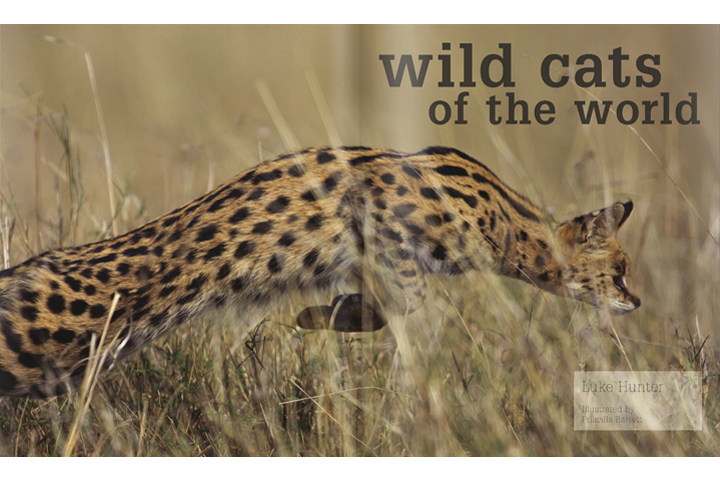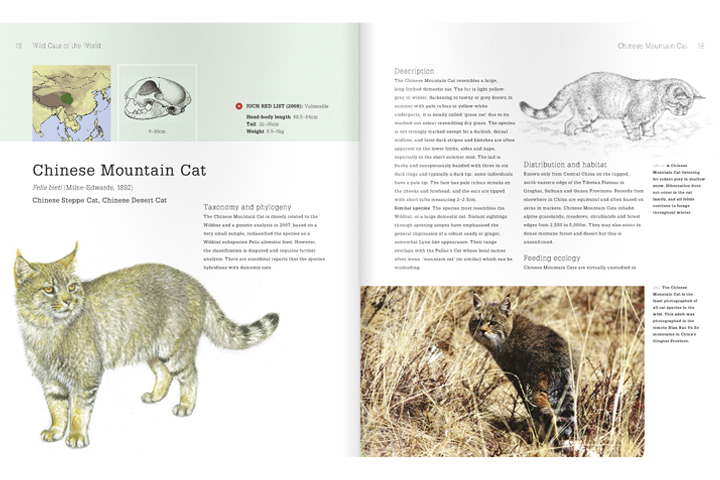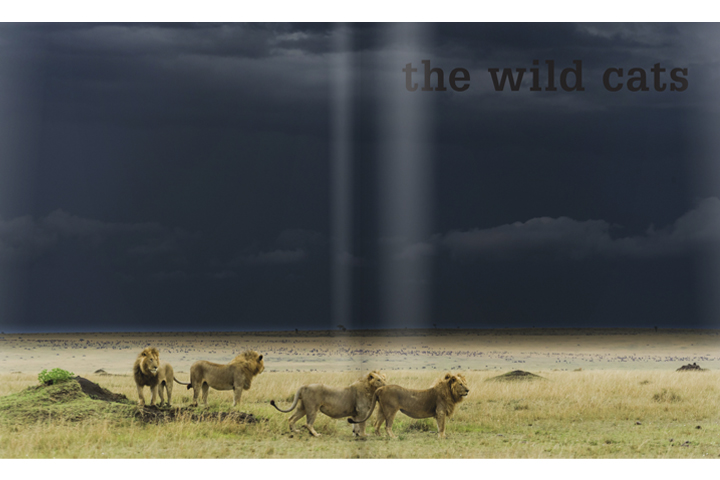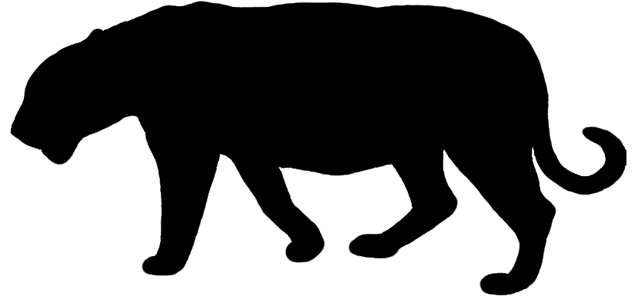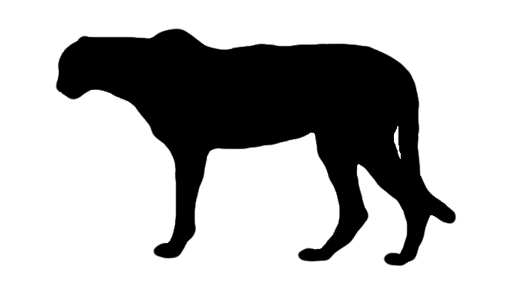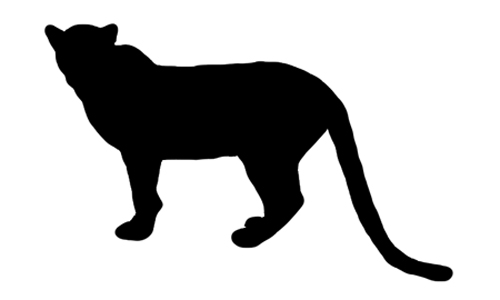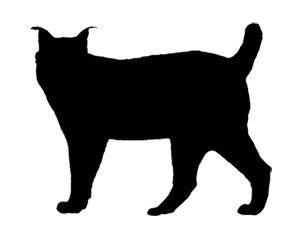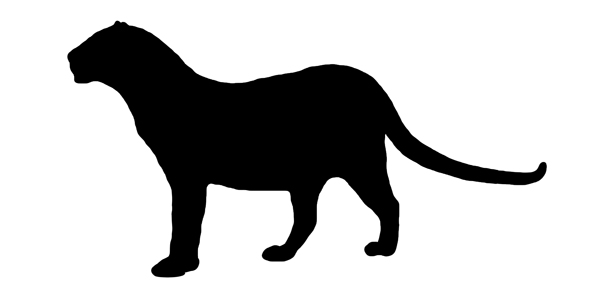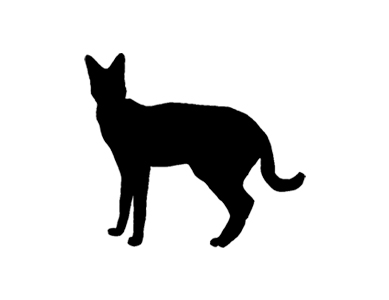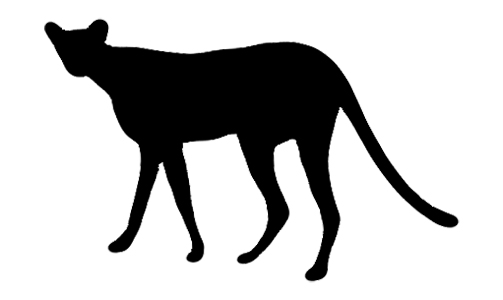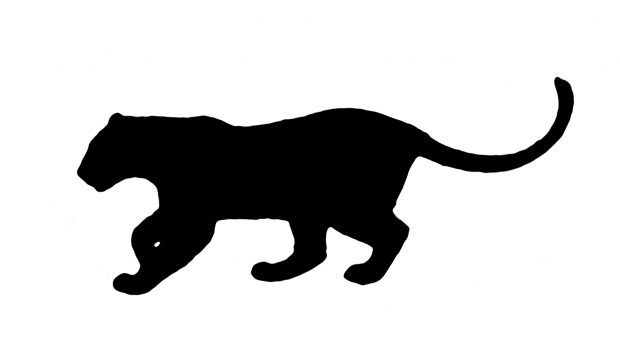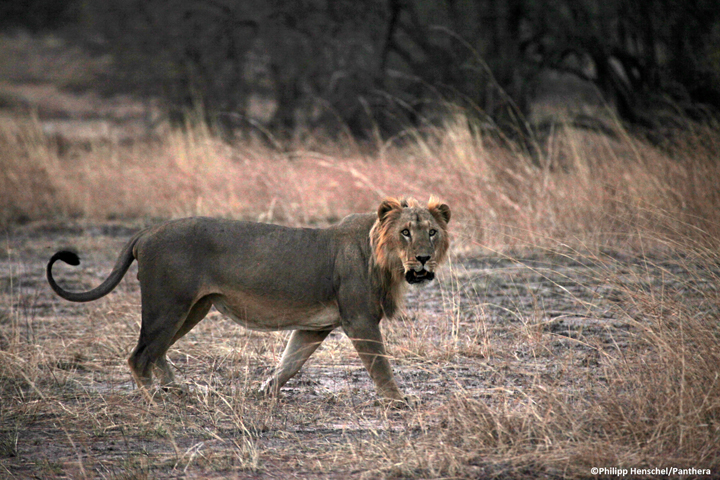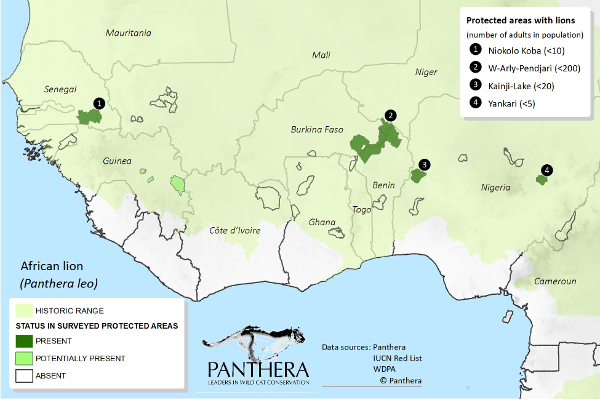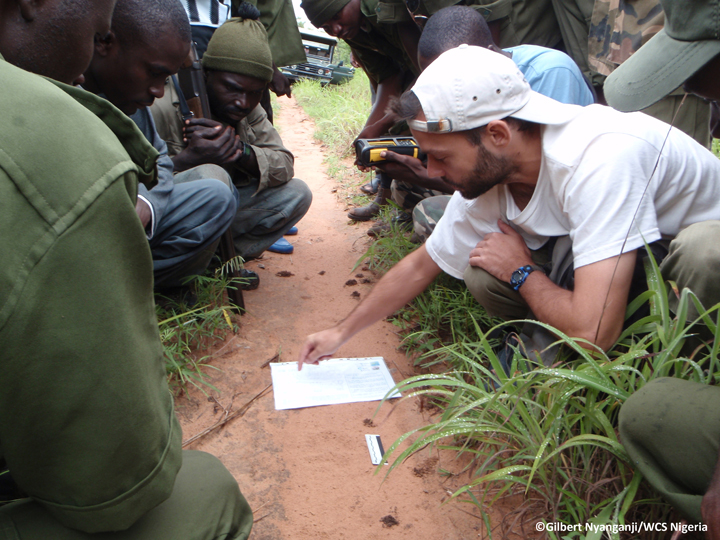Getting a picture of African Leopards in Gabon is not the same as anywhere else on the African continent. Unlike South Africa or Kenya, in Gabon you can’t sit in a safari vehicle and hope it emerges from the brush. This is the rainforest. Think super dense seven foot understory plants that make it impossible to see anything, times ten. Finding a leopard is nearly impossible. The biologists studying these cats deal with it on a daily basis. Phillip Henschel and Laila Bahaa-el-din brave, and I mean brave (to be explained soon) these challenges.
Does this look dense enough?
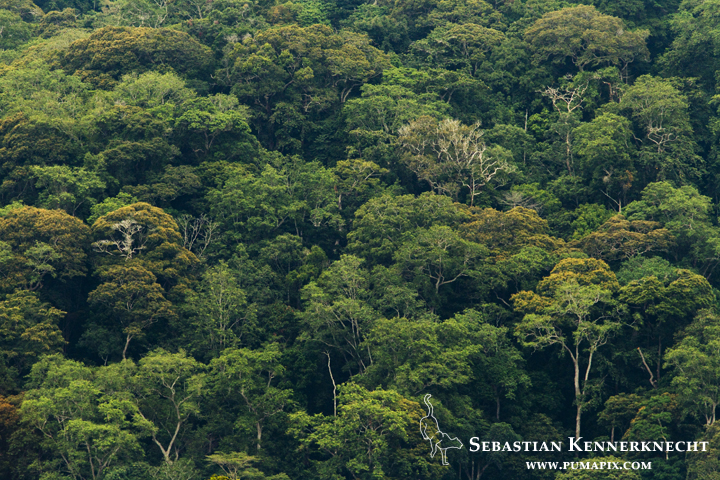
Tropical rainforest, Lope National Park, Gabon
How about now?
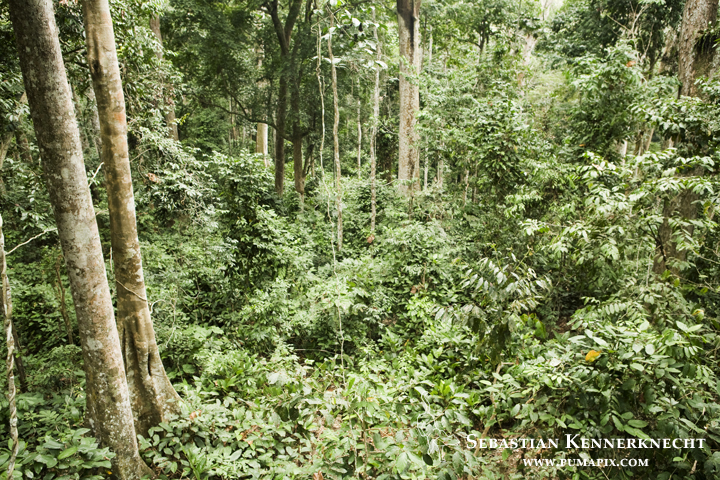
Tropical rainforest, Lope National Park, Gabon
We are in Lope National Park in Gabon where Laila has been conducting her research for the past three months. Phil was nice enough to pick me up from the airport and bring me here along with all of the equipment. Being in their company makes me feel confident that we will get a picture of the big cat, these two know what they are talking about.
On the first evening, we do a quick drive around in the savanna habitat bordering the rainforest. This isn’t Phil or Laila’s first time to the rodeo and it doesn’t take long before they spot Leopard tracks along the road.
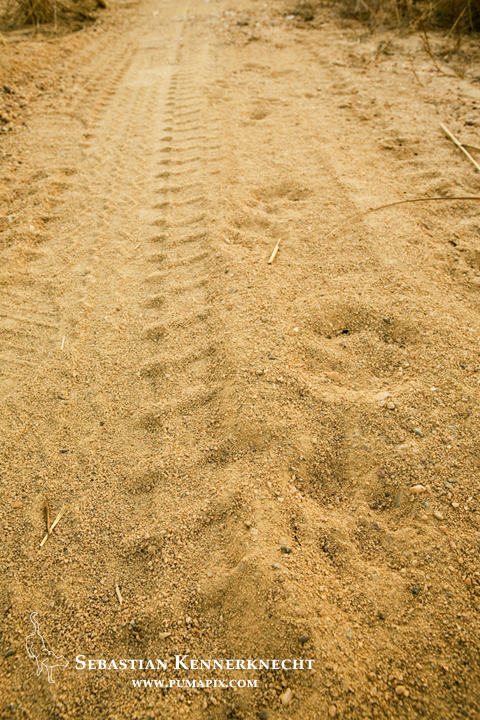
African Leopard (Panthera pardus) tracks on dirt road next to tire marks, Lope National Park, Gabon
My confidence grows, later that night they show me video footage they got with trail cameras that show leopards along river banks. Even more reason to think that this may be possible.
The next day, we load up the backpacks with two digital SLR camera traps and head into the forest. The first sign that this wasn’t going to be easy was when we stopped at the forest edge to listen for African Forest Elephants. If these guys see, smell, or feel you (through vibrations in the ground), make sure you have your running shoes on — they will charge you. They are not the bluff charging kind either; instead they are the full barreling through the rainforest until you are way gone or beneath their feet kind. An encouraging thought. While we take our first steps I wonder how Phil and Laila are staying so calm with this constant threat looming, but somehow they continue on.
We first check one of Laila’s camera traps, deployed along a path.
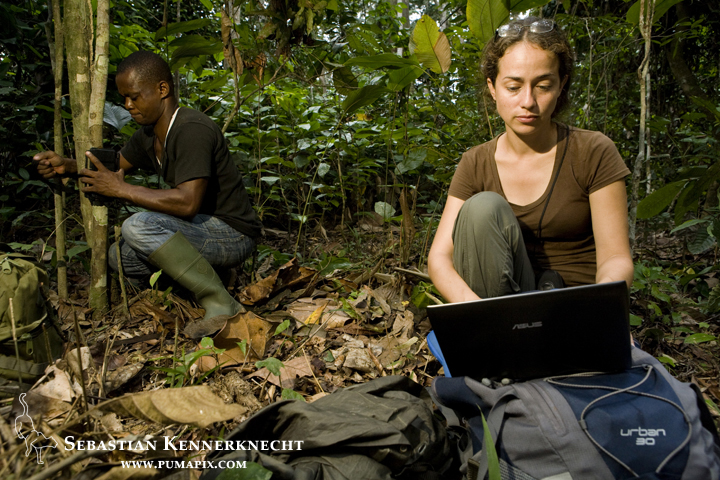
No cats came up on the computer screen. It’s time to move on. We drop into a creek bed. After walking for a bit we notice a ton of leopard prints in the soft sand. A very good sign. We had previously decided to put the camera on a log spanning across the river (due to the cats wanting to avoid the water if at all possible) so we start looking for a suitable log. After a few hundred meters we find the perfect one. Not only are there foot prints all around it, there are scratch marks on it. Phil, also a master tracker, assures me its a leopard marking site.
This means it’s quite likely for the animal to return to this exact spot, so we don’t waste any time and set up the first camera. Another hundred meters and we find another log, this one with some leopard scat on it (which Phil immediately smells, measures, and photographs….crazy Phil), and we place the second camera on that bridge.
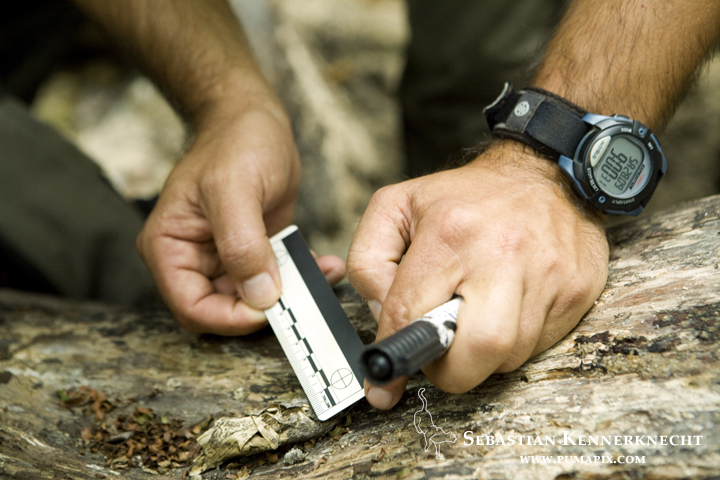
African Leopard (Panthera pardus pardus) biologist Phillip Henschel measuring leopard scat diameter, Lope National Park, Gabon
In the next two days we place cameras along trails that have had leopards come by in the past (based on Laila’s camera trapping efforts). I was already dreaming of cat pictures galore.
Reality hit when we checked four of the cameras after ten days. No cats on any of them, instead other mammals visited (some of them making us people seem frighteningly very very small).
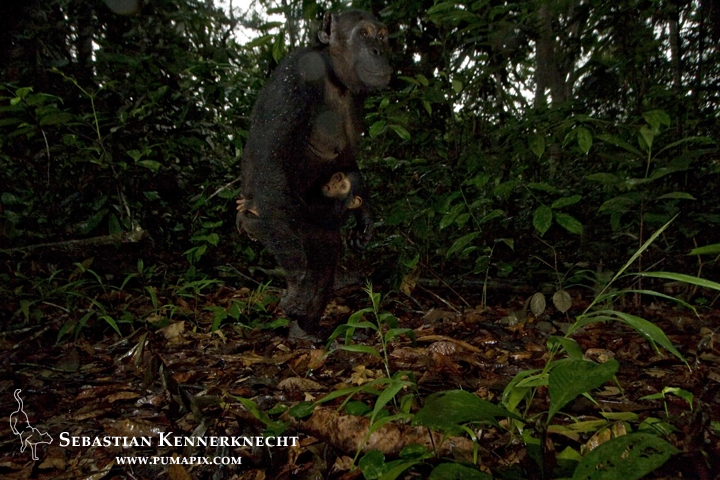
Chimpanzee (Pan troglodytes) mother and baby in tropical rainforest, Lope National Park, Gabon
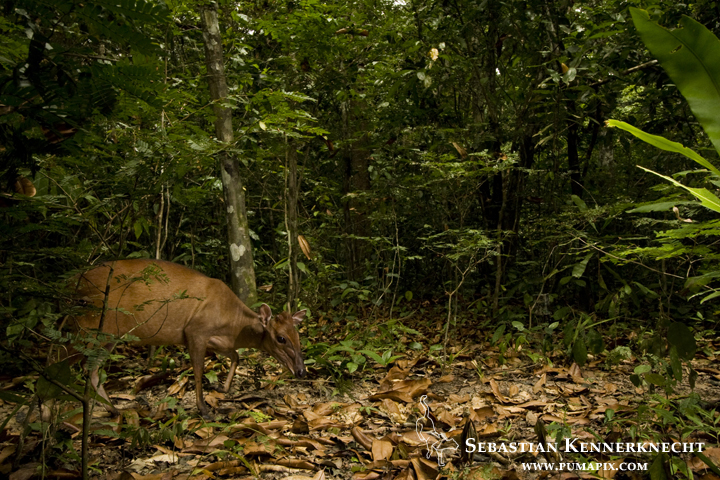
Ogilby’s Duiker (Cephalophus ogilbyi) in tropical rainforest, Lope National Park, Gabon
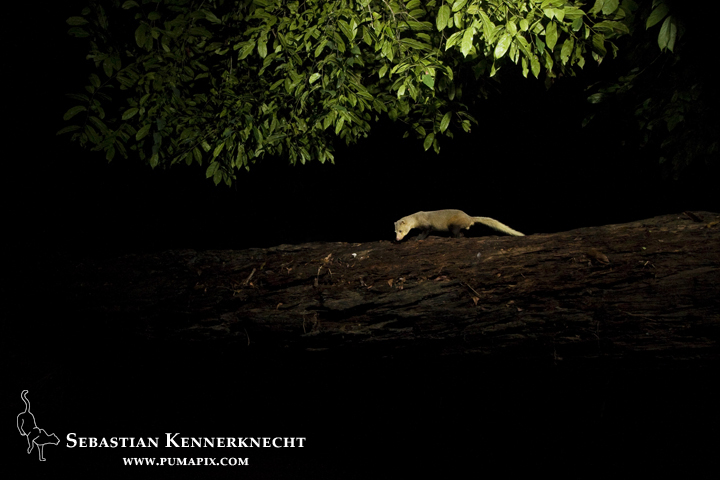
Black-legged Mongoose (Bdeogale nigripes) crossing over log bridge at night, Lope National Park, Gabon
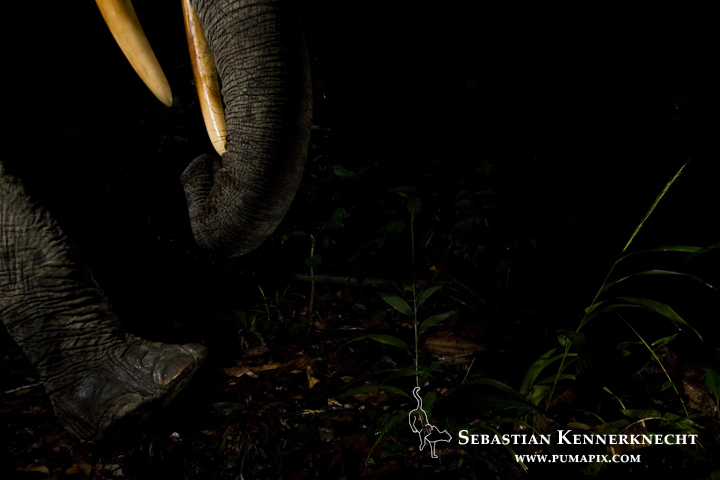
African Forest Elephant (Loxodonta africana cyclotis) bull in tropical rainforest, Lope National Park, Gabon
There were only three weeks left, I was starting to get really nervous about whether or not we would get a feline on one of the cameras. It was time to check the two log cameras, we get to the first camera and bam!!! Right off the bat there is a leopard picture, then another, and another.
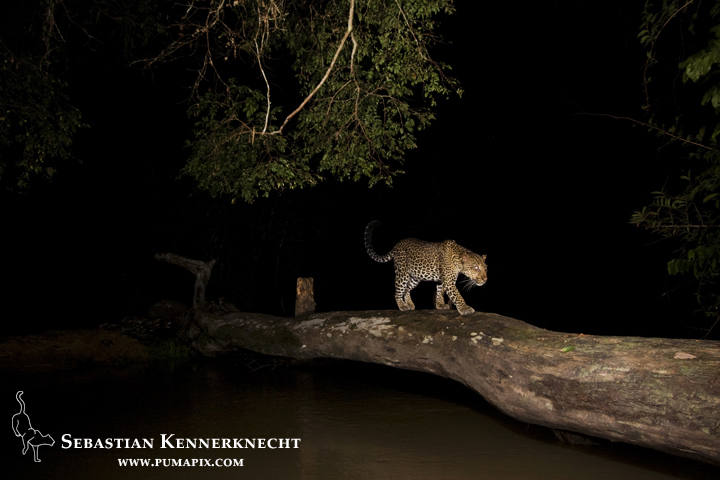
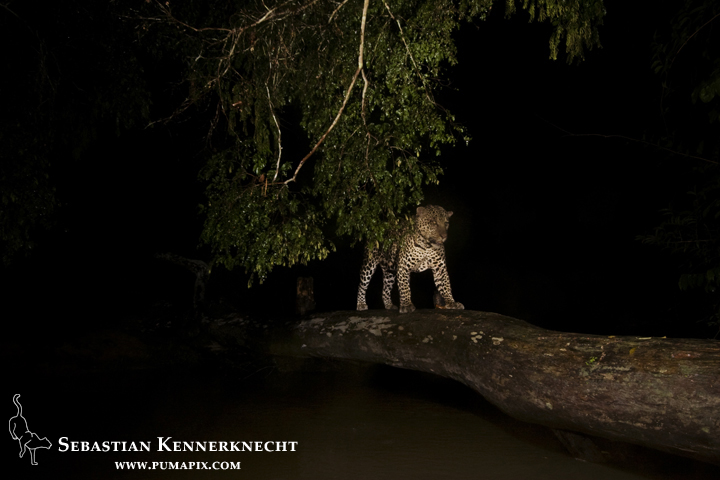
African Leopard (Panthera pardus) male crossing log bridge over river at night, Lope National Park, Gabon
There are a couple of interesting things to note about the leopards in these pictures. One you can clearly see the size difference between the female and the male. Two, their eyes are not cloudy due to the flashes (which I always position so that the eyes look good), instead the clouding of the cornea, also called keratopathy, which leads to partial blindness is caused by Fire Ants that have stung the leopards in the eyes (which must be incredibly painful, if you have ever felt a fire ant bite). Luckily, both leopards look to be in good physical condition, apparently not completely hampered by their partially lost vision.
On to the second bridge. Another leopard photo, one that made me back away from the camera as I was reviewing the images. The leopard seemed to be coming right out of the camera.
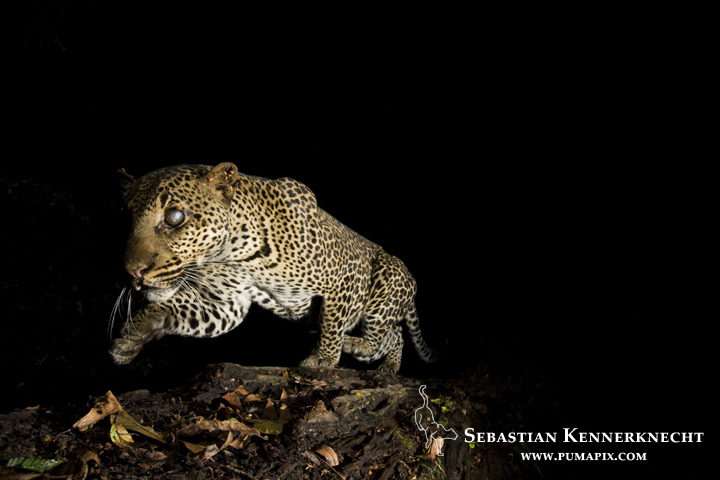
The picture has a weird look to it, the leopard almost doesn’t look real due to the cloudy eyes. In my opinion, as the leopard is also covered with engorged ticks, it exemplifies what a tough world these guys live in. Constantly having to deal with ectoparasites just can’t be fun. I don’t even want to imagine the parasites within their bodies.
After seeing the pictures, I was of course elated, jumping up and down, and simply being extremely excited. I could not have asked for more, or so I thought, until this image showed up two weeks later:
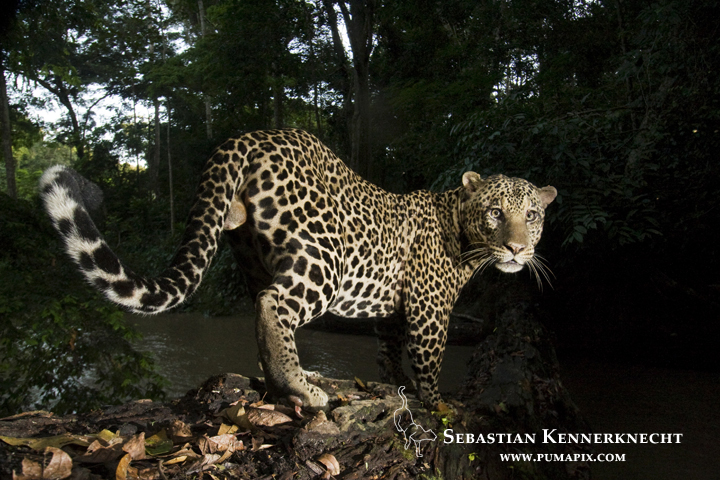
African Leopard (Panthera pardus pardus) male crossing log bridge over river in tropical rainforest, Lope National Park, Gabon
It’s one of my favorite camera trap images because of the lighting, composition, the habitat, and the way the tail swirls around.
A picture like this is not just a set it up and get it kind of situation. Instead it is a culmination of a lot of factors. Building and getting the cameras into a country takes a lot of time, coordination, patience, bureaucratic paperwork, persistence, and sometimes just luck. Then comes the ecological research on the species. How does the animal move about its habitat? How many individuals occupy a certain area? Will more than one cat use the same path? What direction is the cat most likely to move in? I read everything and anything I can about a species before I try and photograph it.
Most importantly, only through extensive field experience by the researchers can these questions be answered. After figuring out the location for the camera, it’s time to decide on the exposure for the camera, and where and how to set the flashes. It’s not easy by any means, but every time I get a picture like the one above, I know it’s worth it.
These pictures were only possible due to Laila and Phil. Thank you guys, it was a true pleasure working together! Being able to call you my friends is something I cherish and I look forward to seeing both soon!



